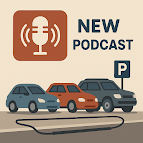The Great Log-Off
For the first time ever , social media usage has actually gone down . Yes, down — as in, people voluntarily spending less time doomscrolling. According to Statista, the daily time spent on social networking by internet users climbed steadily from 2012 all the way to 2023, with the biggest jumps happening between 2015 and 2018. Then… the graph wobbled. A little dip in 2024. Another in 2025. Now we’re back to 2018 levels — which might not sound like much, but in internet years, that’s roughly equivalent to reversing climate change. Social networking still dominates online life, of course, but clearly, something is shifting. Some say it’s because people would rather talk to ChatGPT than Chad from accounting. Others say it’s because “social media” has stopped being social and started being an endless parade of algorithmic sludge and sponcon. Whatever the reason, it’s worth asking: If the crowd is logging off, what happens to crowdsourcing? Let’s take a closer (and on...



